Japanese spider crab is incredibly huge The span of the stretched limbs of individuals resembling the structure of spiders approaches 4 meters And this is with a relatively small body The head of the "monsters" reaches in the diameter of 3760 centimeters The mass of adult specimens is approaching kilogramsJapanese spider crab (Macrocheira kaempferi) has the largest leg span among arthropods In Japanese, it is named as takaashigani, which means "tall legs crab" It is also called Giant spider crab and it is a docile creature Like its name, it looks like a spider with its sphericalshaped bodyThese giant spider crabs reside at a depth of about ft (150 300 m) on the rocky and sandy continental shelf of the Japanese Pacific Ocean But under some circumstances, they have also been seen to reside in shallower waters at a depth of about 1969 ft (600 m)

Spider Crab Long Beach Aquarium
Are japanese spider crabs dangerous
Are japanese spider crabs dangerous-The Japanese spider crab will migrate to shallow waters (160 feet) during the breeding months of Spring (January to April) Males insert sperm into the female abdomen using their first two chelipeds (claws) Females lay up to one million eggs After a hatchingThe Japanese spider crab is a large catch for any fisherman With a leg span of 13 feet (4 meters) and an average weight of around 40 pounds (16 kg), it claims the title of largest crab It may also have the longest lifespan of any crab, living to be 100 years old




Creature Feature Japanese Spider Crab
In fact, that is where ours come from too Tokyo Sealife gave us our spider crabs in exchange for some raggedtooth sharks many years ago They are deep sea animals and live in depths of up to 0m When they mate, they migrate to "shallower" waters of 50m During mating season there is an outright ban in Japan on catching spider crabsJapanese spider crab facts!Subscribehttps//wwwyoutubeThe smallest are microscopic in size All crustaceans have a hard exoskeleton which protects the animal from predators and prevents water loss However, exoskeletons don't grow as the animal inside them grows, so crustaceans are forced to molt as they grow larger
The Japanese spider crab is found in the Pacific side of the Japanese islands, Konshu and Kyushu, usually at a latitude between 30 and 40 degrees North They are found usually in the Sagami, Suruga, and Tosa bays, as well as off the coast of the Kii peninsula However, a Japanese spider crab was once found as far south as Suao, in eastern TaiwanThe Japanese Spider Crabs The Japanese Spider crabs (Macrocheira kaempferi) are a scarylooking crab bunch They have the longest legs among crabs, much like that of spiders The Japanese Spider crabs are crab giants spanning over 16 inches (40 cm) Their legs cover a length of over 18 ft (55 m) and weigh almost 42 lbs (19 kg) The giant Japanese spider crab and its internetclassic molting video from Enoshima Aquarium in Fujisawa, JapanThe timelapse was shot over six hours and is pretty incredible More about these amazing creatures The Japanese spider crab has the greatest leg span of any arthropod, reaching 38 metres (12 ft) from claw to claw
Japanese spider crab Introduction Of the 60,000 species of crustaceans on Earth, Japanese spider crabs are the largest, spanning up to 125 feet from the tip of one front claw to the other They're also one of the world's largest arthropods, animals with no backbone, external skeletons, and multiplejointed appendages The Japanese spider crab is thought to be the biggest crab in the world, with a leg span of up to 13 feet and an average weight of 40 pounds It is also likely the crab with the longest lifespan, living to be up to 100 years old Perhaps even more impressive, the spider crab is one of the oldest living species on Earth, dating back about 100Our oceans are a delicate balance of warm and cold Of beauty and desolation Tourists love to go scuba diving They plunge themselves into the depths of th




Japanese Spider Crab Habitat Lesson For Kids Study Com



Japanese Spider Crab Weird Creature
2 Japanese Spider Crab (Macrocheira kaempferi) The next types of ocean crab is japanese spider crab From its name, you know that you can find this type of crab in the water of Japan Its Japanese name is takaashigani that has a meaning of tall legs crab This type of crab has the largest leg span that could reach up to 55 m from claw to The Japanese Spider Crab is one of the longest living creatures in the world and is often reported that it may live up to 100 years in its natural habitat However, other reports indicate that the species generally lives for more than 50 yearsThe largest specimens of all are the Japanese Spider crabs, which can reach even 4 meters in leg span , and twenty kilograms in weight(See the Article Japanese Spider Crabs for more information) On the other hand, the smallest crab in the world is known as the violinist crab, which only gets to measure between two and a half, and three
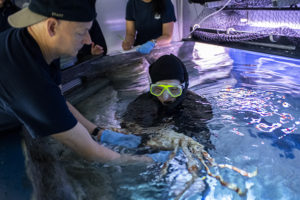



Spider Crabs Make A Scientific Splash Point Defiance Zoo Aquarium
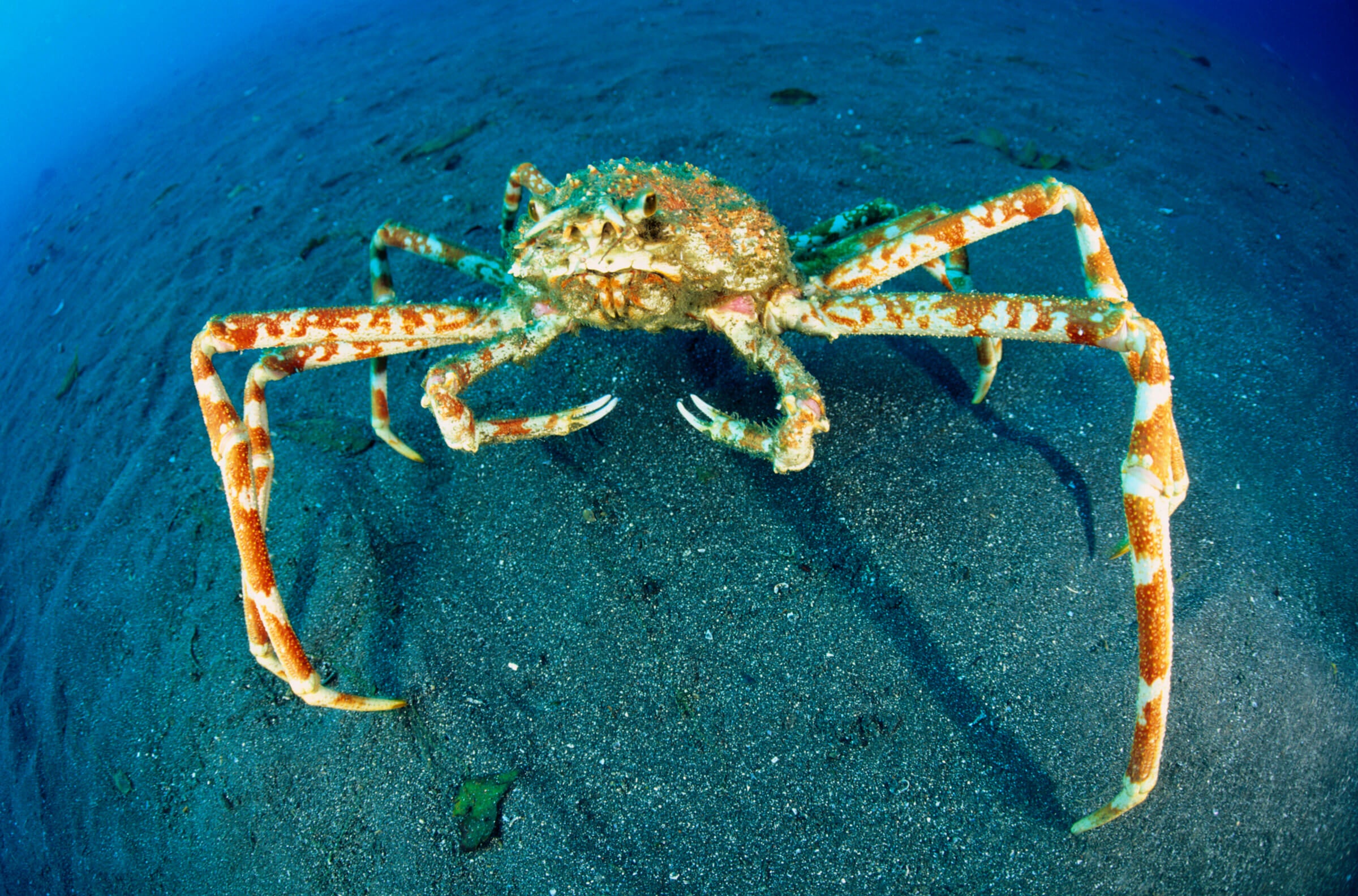



Japanese Spider Crab Georgia Aquarium
Japanese Spider Crab Facts Lesson for Kids Instructor Diane Sieverson Show bio Diane has taught all subjects at the elementary level, was the principal of a KJapanese spider crab (Macrocheira kaempferi), the largest living species of crab, found on the bottom of the Pacific Ocean Libinia emarginata, the portly spider crab, a species of crab found in estuarine habitats on the east coast of North America Hyas, a genus of spider crabs, including the great spider crabThe Japanese spider crab lives on its own




Watch Creepy Footage Of A Japanese Spider Crab As It Moults Out Of Its Shell Express Star
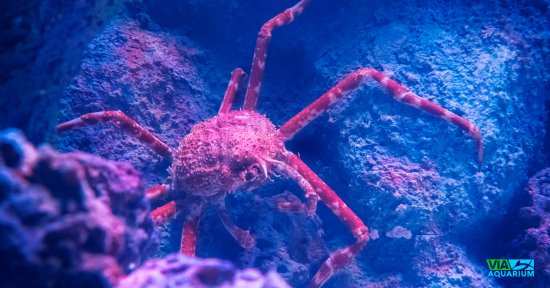



Japanese Spider Crab Picture Of Via Aquarium Schenectady Tripadvisor
The largest crustacean is the Japanese spider crab, at over 12 feet long; Giant Japanese spider crab is the largest arthropod's representative It's got a resemblance with an awkward looking arachnid German naturalist Engelbert Kaempfer was first to describe it in the 17th century giving the creature a scientific name Macrocheira Kaempferi, which means "a longlegged crab" Preparing a giant Japanese spider crab is no easy task Marcel Antonisse/Getty Images Much like regular crabs, the Japanese spider crab is harvested with trawling nets, but catching one in the spring mating season is strictly forbidden because the species has suffered population decline in the past, and this is an effort to protect them The
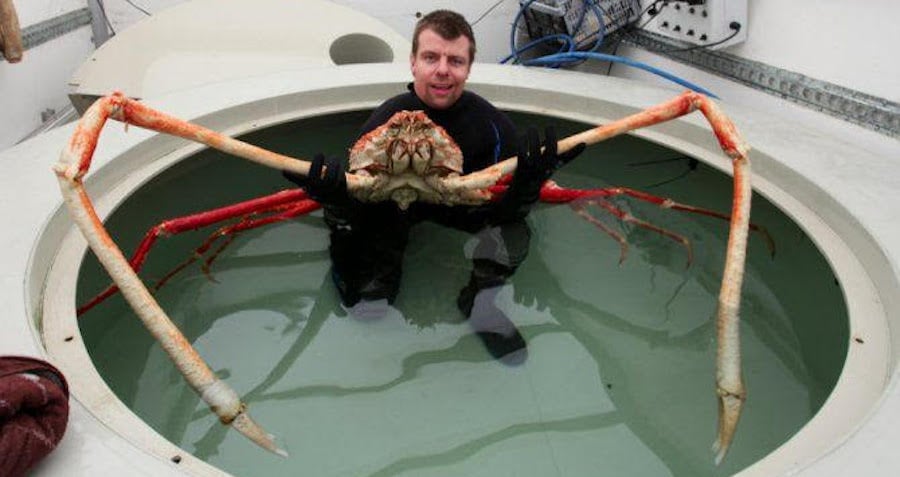



Meet The Japanese Spider Crab The Daddy Long Legs Of The Sea




Angry Spidercrab Spider Crab Attacks An Underwater Camera Krab Monstr Atakuet Kameru Hd Youtube
They're not particularly picky eaters and will feed on seaweed, mussels, starfish and well, anything else✦ Japanese spider crabs are found in the Pacific ocean near Japan They commonly live as deep as meters in the seabed ✦ Japanese spider crabs are eaten and used for ornamental purposes They are also used for researchThe Japanese spider crab (Macrocheira kaempferi)!




Japanese Spider Crab Wikipedia




Japanese Spider Crab Facts And Photos
Overall, the crab can weigh up to 44 pounds Location Japanese spider crabs live in the Pacific Ocean near Japan, as deep as 5001,000 feet or more They like the vents and holes of the deeper ocean, which makes them harder for fishermen to find So it's no surprise that this crab is a delicacy in Japan We Have got 9 pix about Japanese Spider Crab Habitat images, photos, pictures, backgrounds, and more In such page, we additionally have number of images out there Such as png, jpg, animated gifs, pic art, symbol, blackandwhite, pic, etc If you're searching for Japanese Spider Crab Habitat theme, you have visit the ideal site What is a Japanese spider crab's habitat?
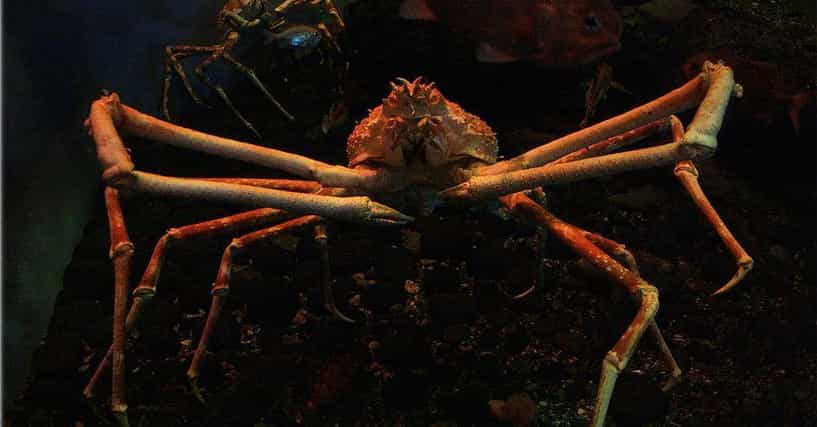



11 Creepy Facts About Japanese Spider Crabs
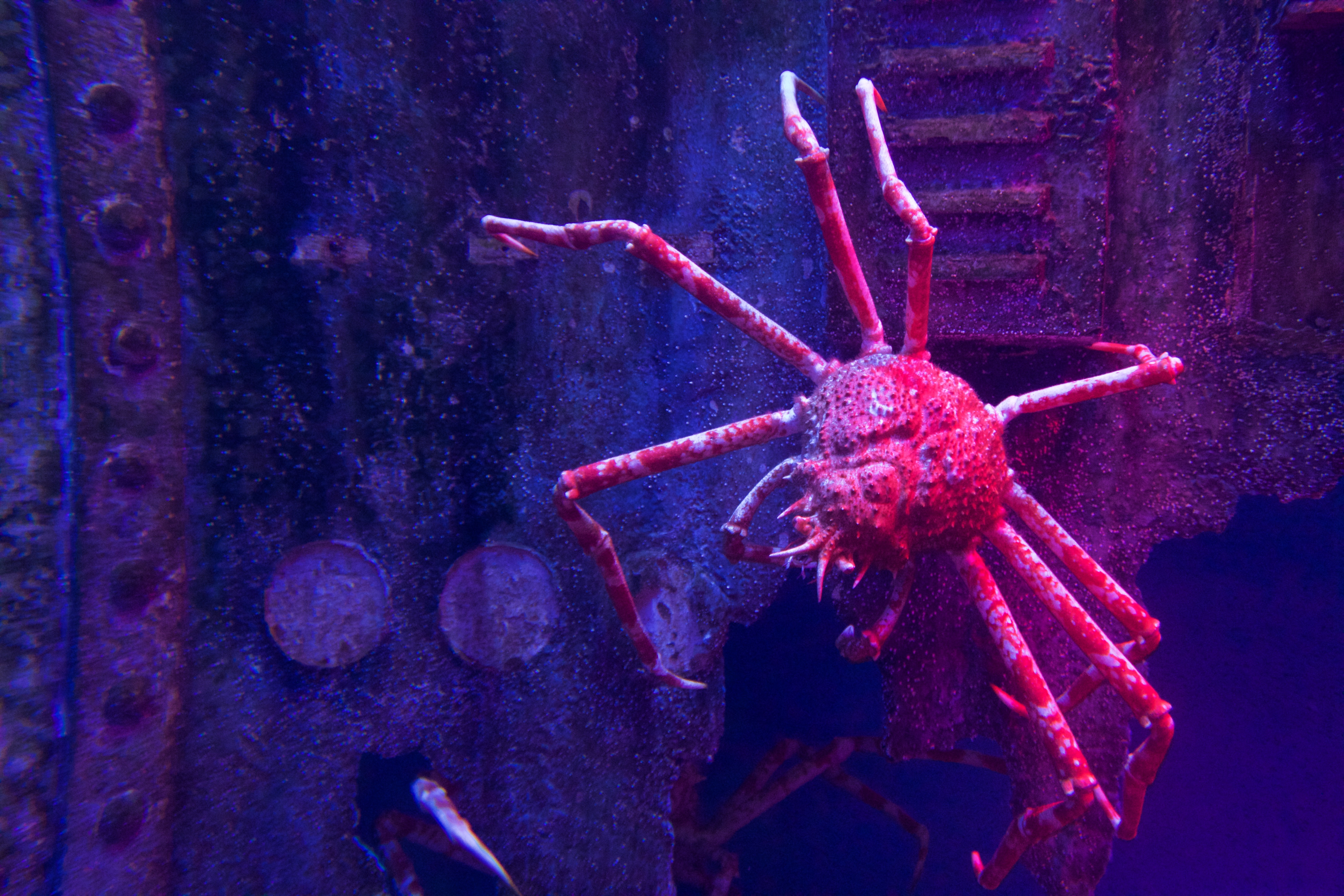



Japanese Spider Crabs Encyclopedia Of Life
A Spider crab's habitat is in the Southern islands of Japan and the Pacific Ocean near Japan They live at a temperature of 10 degrees Celsius Who do spider crabs live with? Dungeness Crab is among the most festive crab dishes you are able to menu Dungeness crabs are located just in the North Pacific Certain crabs may also make an extremely tasty meal! In general, you never have to worry about happening across a Japanese spider crab because they only really live in the depths of the ocean near Japan They're usually found at around 150 to 300 meters down , which is nearly a thousand
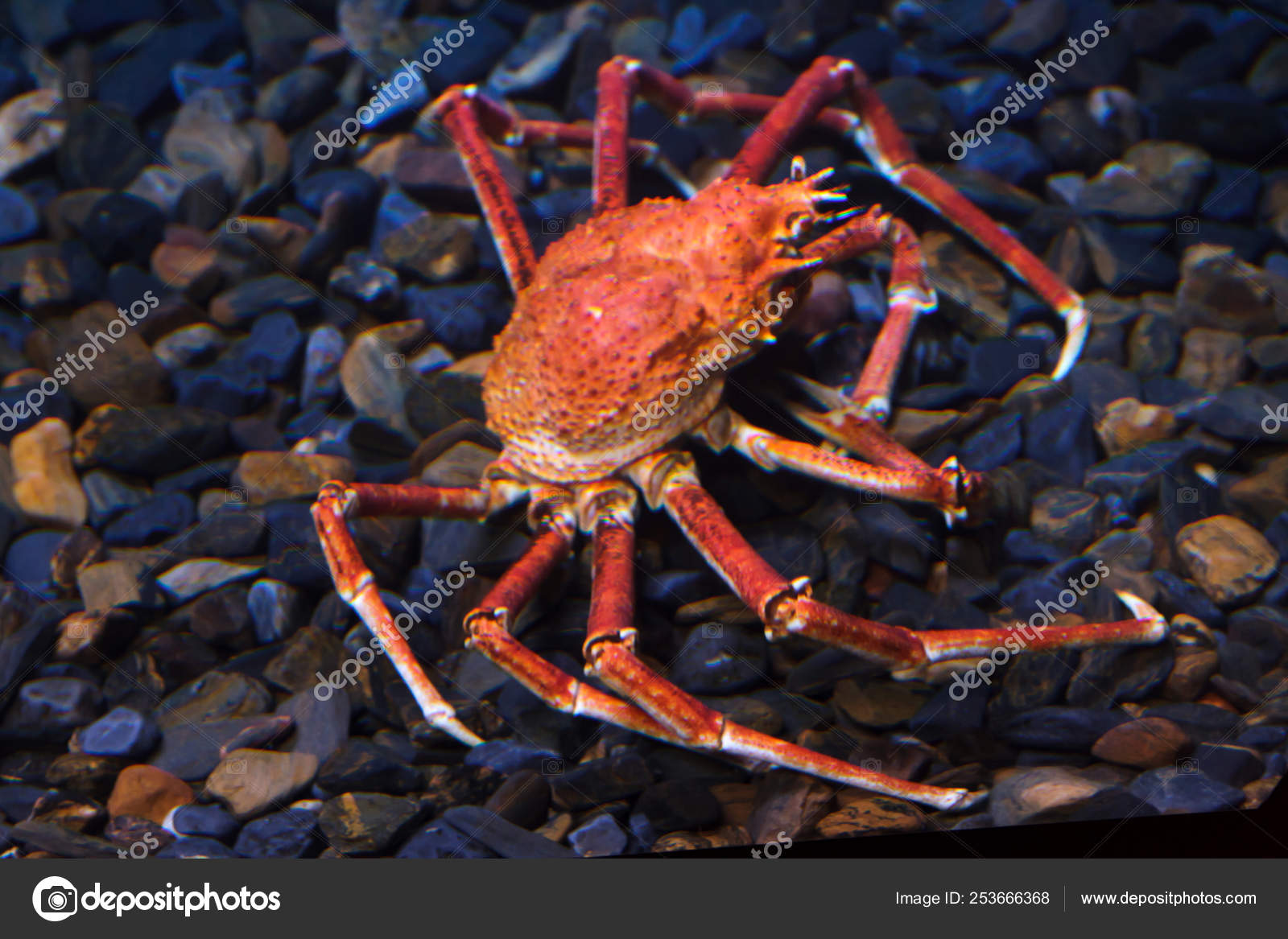



240 Japanese Spider Crab Stock Photos Free Royalty Free Japanese Spider Crab Images Depositphotos
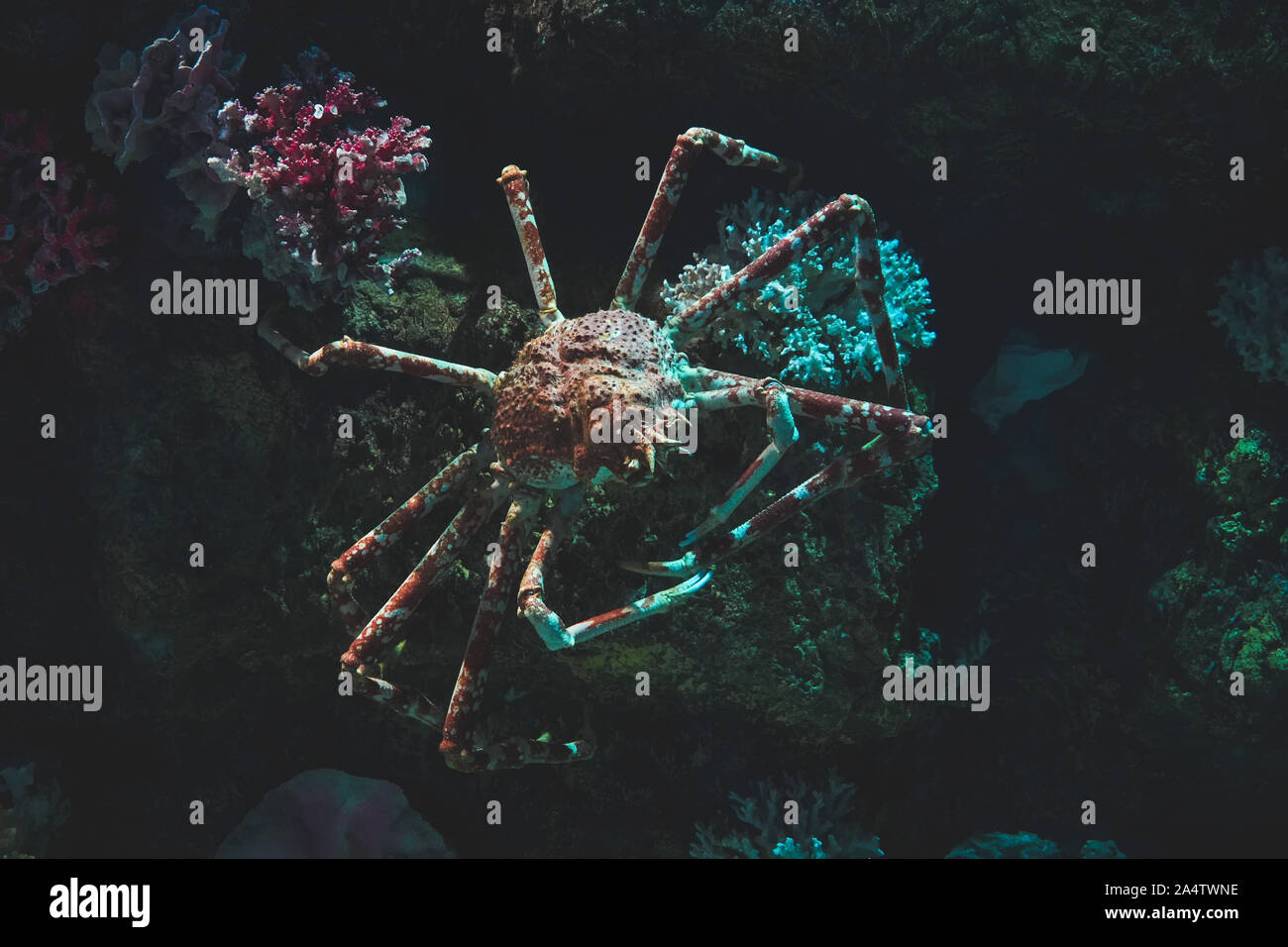



Giant Spider Crab In Their Natural Habitat In The Dark Stones Stock Photo Alamy
The spiny spider crab is also known as the European spider crab It is a large, orange crab with long spindly legs like a spider and a distinctive spiny shell Their oval shells are often covered in algae, giving them a green hairy look!Range / Habitat Occurs in the Pacific Ocean around Japan Found on the seabed, often inhabiting vents and holes on the ocean floor at depths of 160 to 2,000 feet ( m)The Japanese spider crabs natural habitat is on the bottom of the Pacific Ocean (some 300 – 400 metres deep) around the Japanese archipelago, where it feeds on dead animals and shellfish Japanese spider crabs often live in the seabed at depths of 150 – 800 metres, however, they are found most prominently in depths of 0 – 300 metres




Japanese Spider Crab Facts For Kids




Giant Spider Crabs Inside Ecology
The natural habitat of the Japanese spider crab Macrocheira Kaempferi is the right side of the Japanese islands, Kyushu and Konshu They can be found off the coast of the Kii peninsula They are also found in the Sagami, Suruga, and Tosa bays They are usually found on the rough and sandy base of the continental shelf Distribution and habitat From Tokyo Bay in Japan to Kagoshima Province, the Japanese Spider Crab is found on the south coast of the Japanese island of Honshū The Japanese Spider Crab is found in a selection of deep sea areas at an average depth ofThe Japanese spider crab is the largest living arthropod, reaching 13 feet in arm span It is an omnivorous scavenger feeding on decaying animal and plant matter Found in the cold, deep waters off the coast of Japan, the Japanese spider crab is known to breed between the months of January and Apri



Riverview Science George Sember Marksman S Spider Crab
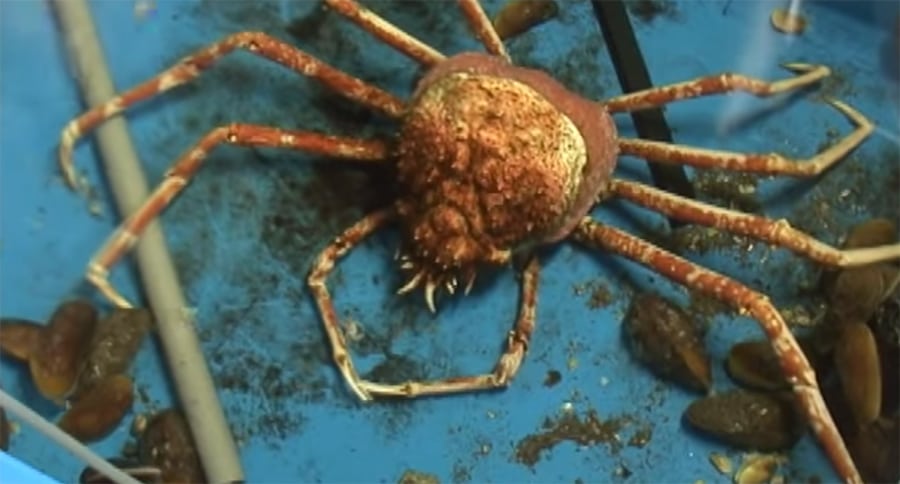



Molting Japanese Spider Crab Time Lapse Enoshima Aquarium The Kid Should See This
The Japanese spider crab is found in the Pacific side of the Japanese islands, Konshu and Kyushu, usually at a latitude between 30 and 40 degrees North They are found usually in the Sagami, Suruga, and Tosa bays, as well as off the coast of the Kii peninsula However, a Japanese spider crab was once found as far south as Suao, in eastern Taiwan Japanese Spider Crab – Facts, Habitat, Diet, Behaviour The Japanese spider crab is a forms of marine crab that lives within the waters round Japan It has the most important leg traverse of any arthropod It is the topic of little scale fishery which hasThe legs of the Japanese spider crab can reach more than two meters in length, the frontal being the longest onesSo, the legs in conjunction with their body can reach a total span (from cheliped to cheliped) of 38 meters in diameter, and about twenty kilograms in weight There have been not confirmed reports about certain specimens that reach almost seven meters in total span when




Japanese Spider Crab Macrocheira Kaempferi At The Kyoto Aquarium These Crabs Have The Longest Legspan Of Any Arthropod And Can Live To Be About 100 Years Old Oc Aquariums
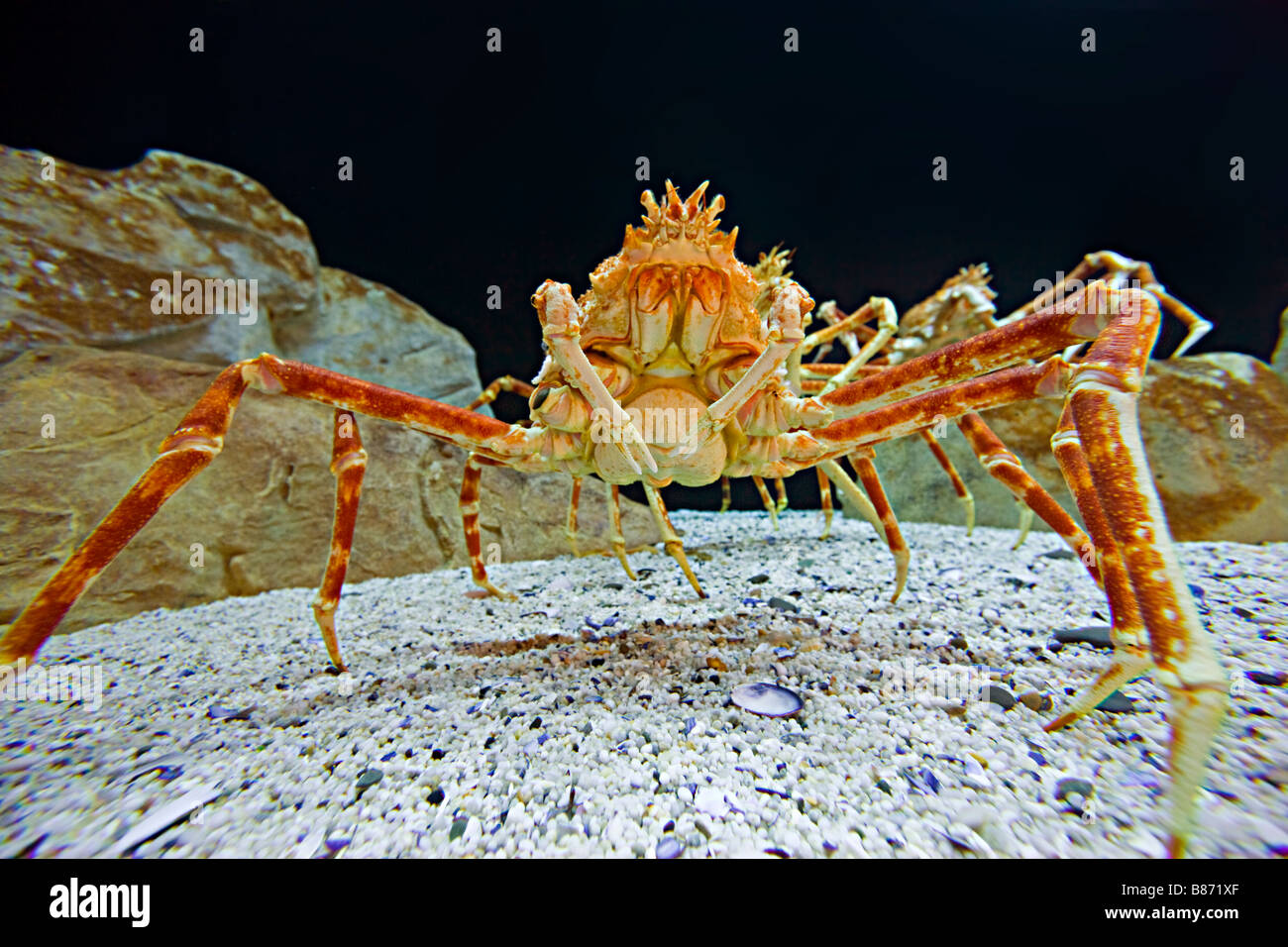



The Giant Japanese Spider Crab Macrocheira Kaempferi Stock Photo Alamy
The Japanese giant spider crabs will only live in the North Pacific Ocean, in the waters that border the Japanese islands of Konshu and Kyushu In particular, they seem to be found more often in The world's largest crustacean is a malacostracan—the Japanese spider crab (Macrocheira kaempferi) has a leg span of up to 13 feet Malacostrocans inhabit marine and freshwater habitats A few groups also live in terrestrial habitatsGiant Japanese Spider Crab The giant spider crab has the largest leg span of all known species of crab and may live up to 100 years The Japanese name for this species is takaashigani literally translating to "tall legs crab" Their armored exoskeletons help protect them from predators
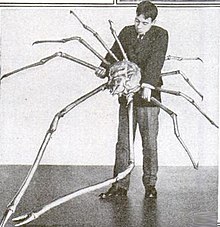



Japanese Spider Crab Wikipedia
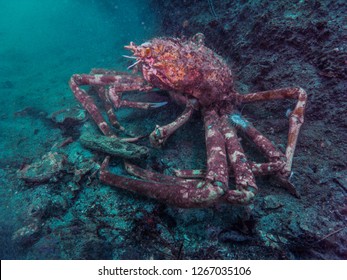



Giant Spider Crab High Res Stock Images Shutterstock
Japanese spider crabs live on the Pacific side of Japan as far south as Taiwan and at chilly depths ranging from 164 feet to as low as 1,640 feet (They spawn at the shallower end of thatHabitat The Japanese spider crab is found in the Pacific side of the Japanese islands, Konshu and Kyushu, usually at a latitude between 30 and 40 degrees North They are found usually in the Sagami, Suruga, and Tosa bays, as well as off the coast of the Kii peninsula The Japanese spider crab is found up to the depths of 2,500 feet (750 meters)Quick facts about the world's largest crustacean!
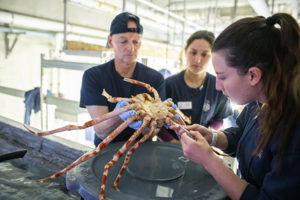



Spider Crabs Make A Scientific Splash Point Defiance Zoo Aquarium




Everything You Need To Know About Japanese Giant Spider Crabs
Macrocheira kaemferi As the name may suggest, the Japanese Spider Crab is not a native to Oregon coastal waters but rather lives at the western end of the Pacific Ocean The crab was introduced to the Aquarium several years ago during a temporary exhibit and quickly became a favorite with our visitors and staff Stunning crustaceans in bothHabitat Japanese spider crabs most often inhabit the sandy and rocky bottom of the continental shelf and slope at an average depth of meters They have, however been found at depths of 600 feet During spawning season the crabs spend most of their time inJapanese spider crabs are mostly found off the southern coasts of the Japanese island of Honshū, from Tokyo Bay to Kagoshima Prefecture Outlying populations have been found in Iwate Prefecture and off Suao in Taiwan Adults are found at depths between 50
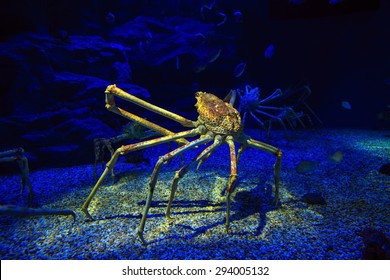



Japanese Spider Crab Hd Stock Images Shutterstock



Watch Creepy Footage Of A Japanese Spider Crab As It Moults Out Of Its Shell Independent Ie
The Association of Zoos & Aquariums offers Animal Care Manuals (ACMs) created by leading biologists, veterinarians, nutritionists, reproduction physiologists, behaviorists and researchers to equip zoo and aquarium employees and volunteers with comprehensive care guides for various species View a list of Animal Care Manuals today Japanese spider crabs are large crabs native to Japan's coastal ocean habitats The scientific name of a Japanese spider crab is Macrocheira kaempferi and it is from the family Inachidae, a family of crabs The leg span of Japanese spider crabs can reach up to 38 metres (125 feet) – a length greater than any extant anthropod, and theThe habitat of each type of spider crab is a bit different Japanese Spider Crab The Japanese spider crab, Macrocheira kaempferi, is the largest crab alive These crabs primarily live in temperate waters of the Pacific Ocean near Japan They inhabit the sandy bottom of the continental shelf at an average depth of 150 to 300 meters, but will




Japanese Spider Crab On Behance




80 Japanese Spider Crab Stock Photos Pictures Royalty Free Images Istock
Aside from a few aquariums around the Earth, you won't have the ability to see Japanese spider crabs Ghost Crabs are largely nocturnalJapanese Spider Crab Facts Firstly, the astounding Japanese Spider Crab easily ranks as the largest known living arthropod However, that specifically applies in reference to its truly prodigious leg span Sadly, this incredible creature inhabits a rather seriously restricted zone of habitation This limited range therefore renders the crustacean especially vulnerable to numerous threats




Adw Macrocheira Kaempferi Information
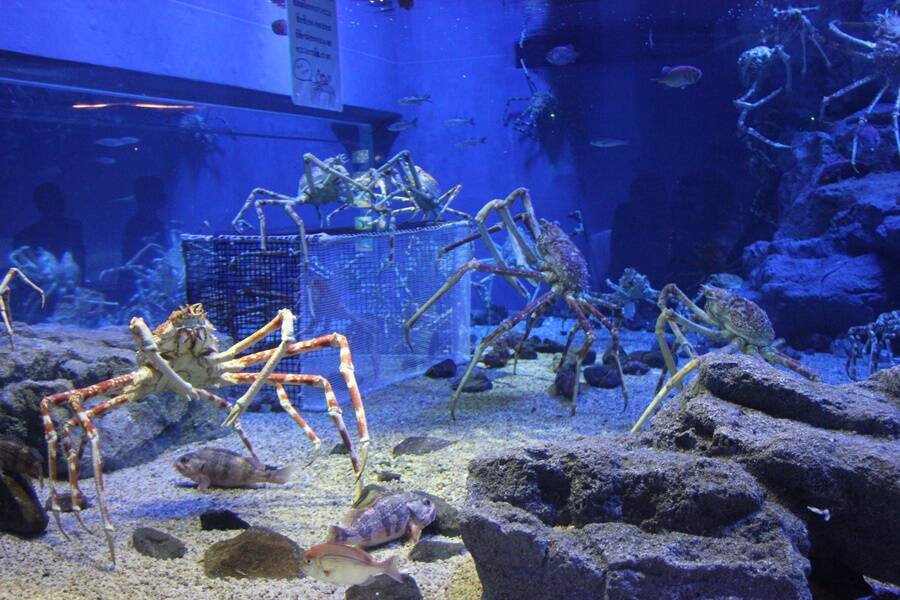



Meet The Japanese Spider Crab The Daddy Long Legs Of The Sea
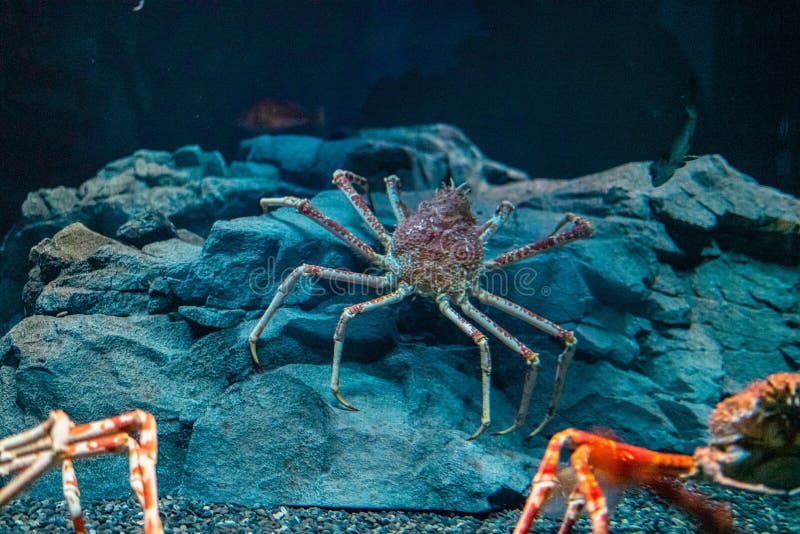



460 Japanese Spider Crab Photos Free Royalty Free Stock Photos From Dreamstime
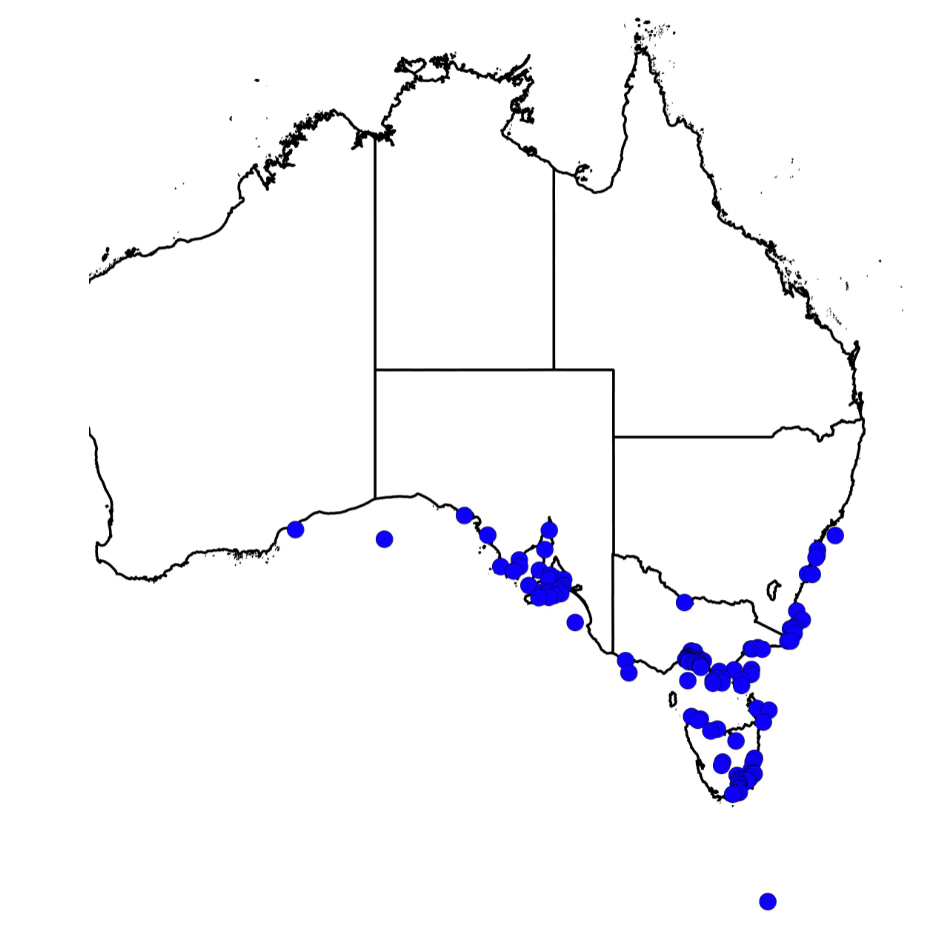



Giant Spider Crab Distribution And Biology Vfa



Q Tbn And9gcscs1wztlkl9dqnpz8syuqqey8lraptpadcd8ymvyin2bcypvzt Usqp Cau
/cloudfront-us-east-1.images.arcpublishing.com/gray/7X4RDYURWNDRFI3TUNZAMMXECQ.jpg)



Watch Time Lapse Of Japanese Spider Crab Molting



Japanese Spider Crabs All About The Giant And Scary Crabs




10 Surprising Japanese Spider Crab Facts That Will Amaze You




240 Japanese Spider Crab Stock Photos Free Royalty Free Japanese Spider Crab Images Depositphotos




Japanese Spider Crab Wiki Thereaderwiki



The Unit That Is A Japanese Spider Crab Absoluteunits



Japanese Spider Crabs Pop Books Online



Japanese Spider Crab Project Noah




Giant Japanese Spider Crab Tennessee Aquarium




Japanese Spider Crab Yisong Yue Flickr
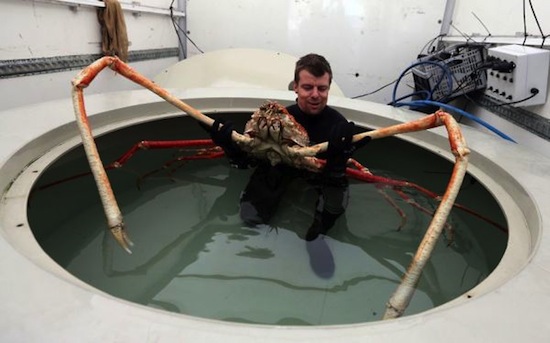



Japanese Spider Crabs Twelve Feet Of Legs Kids Discover




Spider Crab Long Beach Aquarium



Q Tbn And9gcrlz1xwlnpfhoywqdyn Oji1lqjintv5d2pvrxcrexmad9xuanr Usqp Cau



What Is The Habitat Of The Spider Crab Animals Mom Com




Japanese Spider Crab By Anthony Earth Buddies
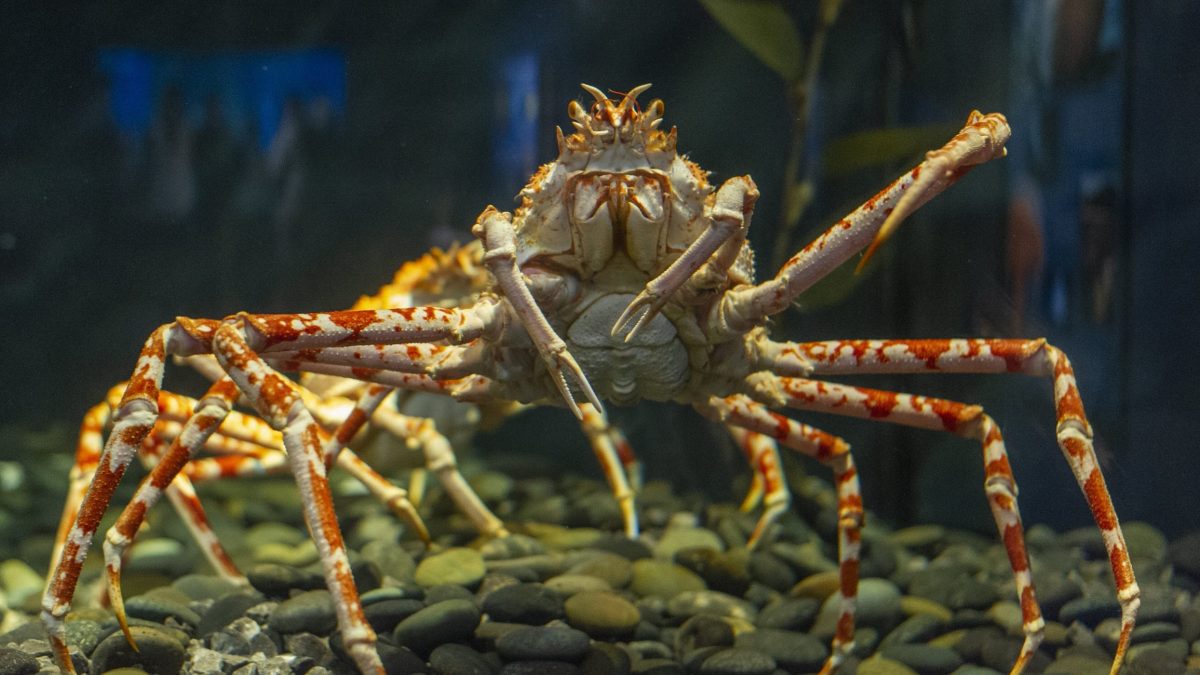



Giant Japanese Spider Crab Tennessee Aquarium
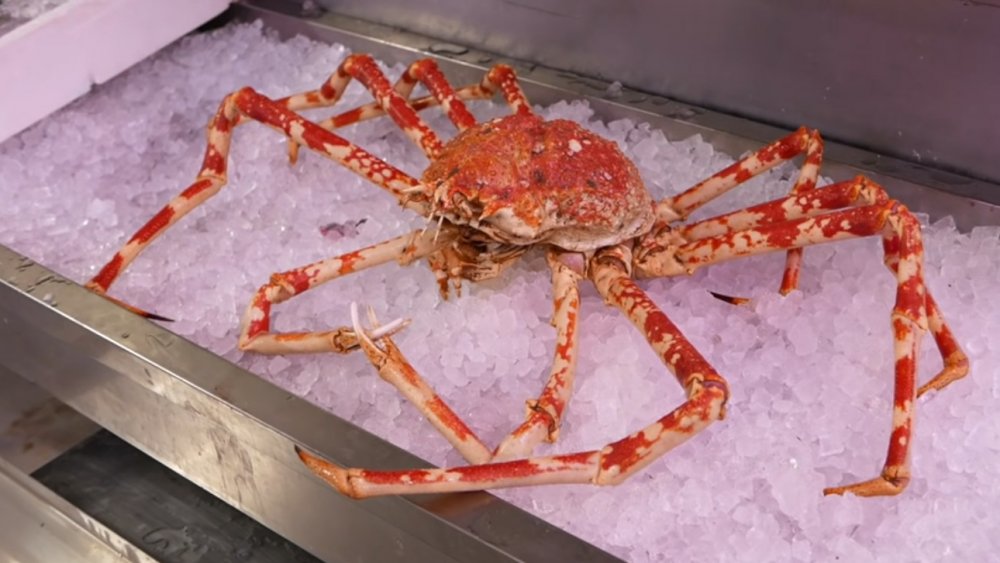



Can You Eat A Giant Japanese Spider Crab




Minden Pictures Japanese Or Japanes And Spider And Crab




10 Reasons Why The Giant Spider Crab Is The Crustacean Of Your Nightmares Viralnova
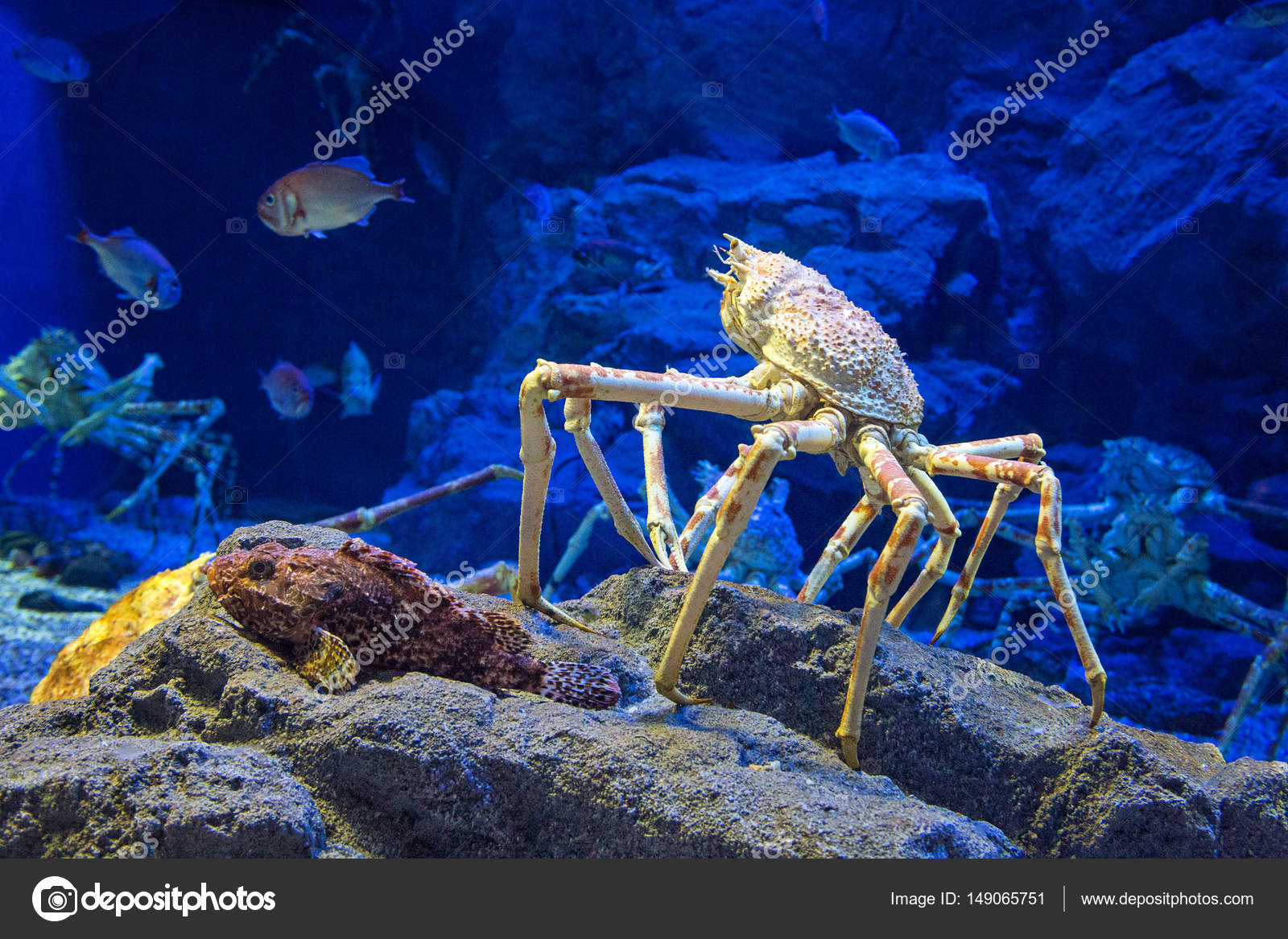



Japanese Spider Crab Stock Photo By C Rixipix




Facts The Japanese Spider Crab Youtube
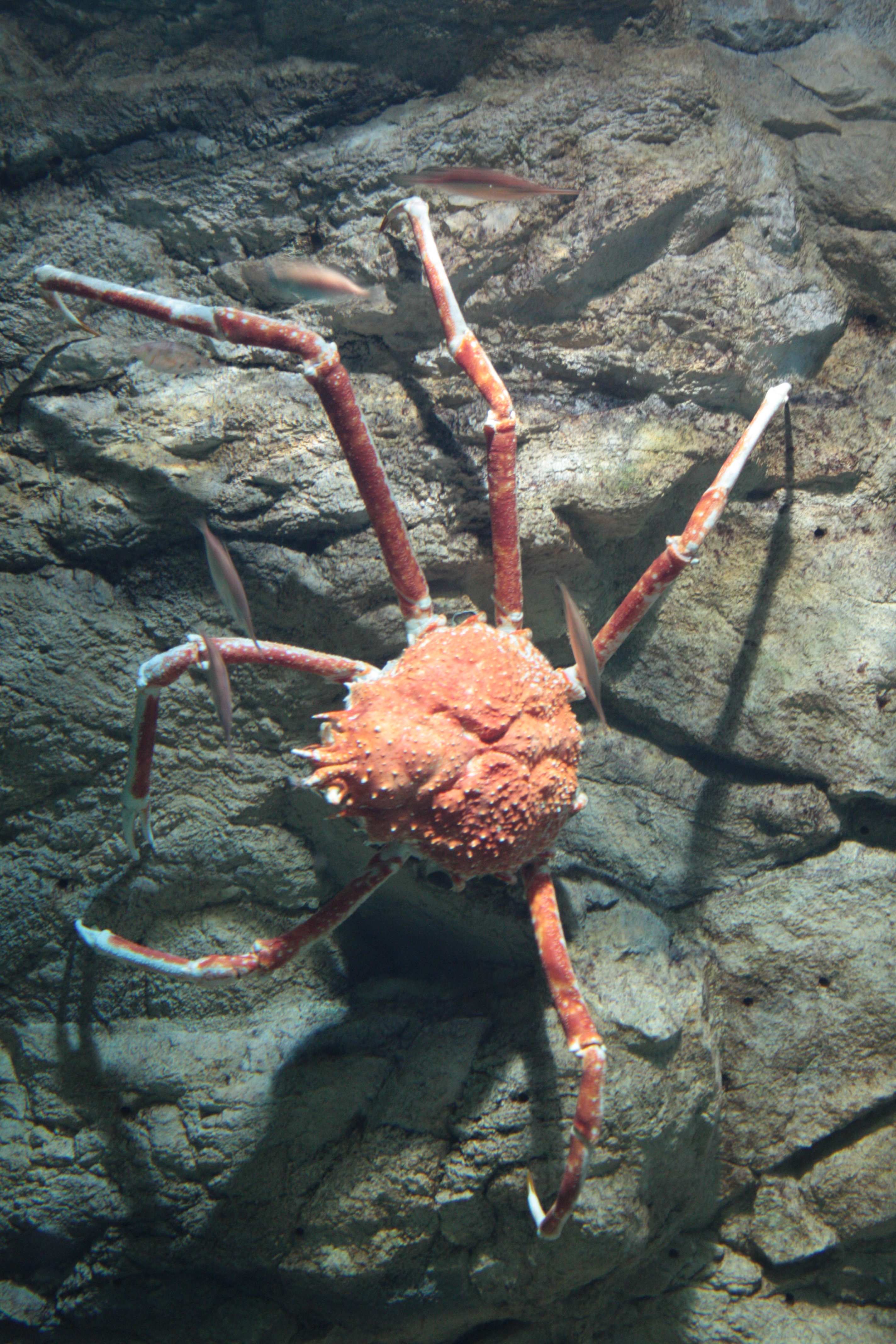



File Spider Crab In Spb Aquarium Jpg Wikimedia Commons




Japanese Spider Crab The Dallas World Aquarium




Amazon Com Japanese Spider Crab Macrocheira Kaempferi Poster Print By Vwpicsstocktrek Images 34 X 22 Posters Prints




Creature Feature Japanese Spider Crab
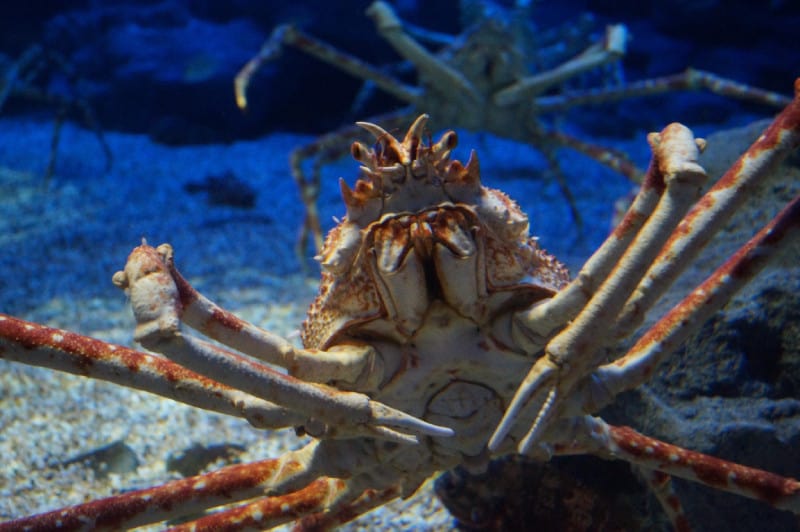



Japanese Spider Crab L Astounding Our Breathing Planet
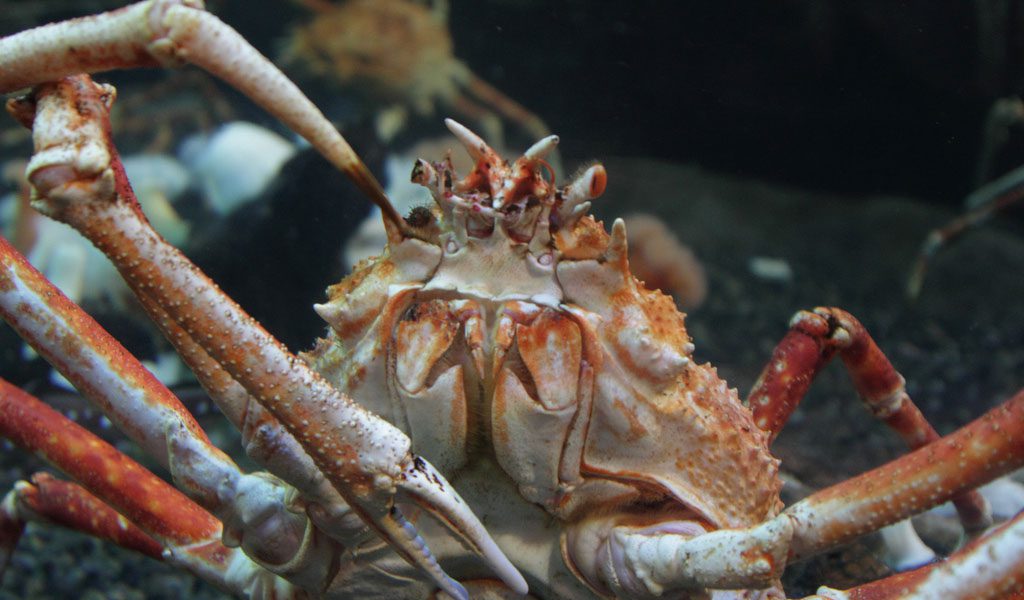



Japanese Spider Crabs Facts Information Pictures




Japanese Spider Crab Facts Lesson For Kids Study Com




Japanese Spider Crab By Jaeden Ventura
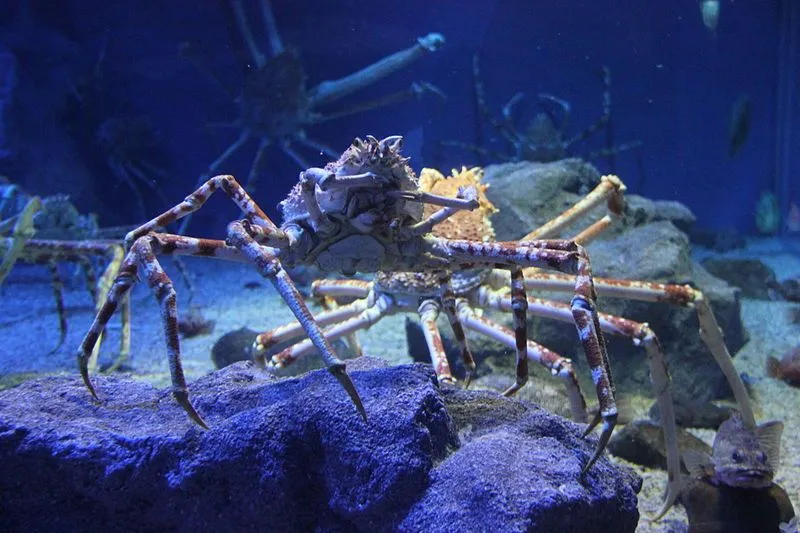



Spider Crab 15 Facts You Won T Believe




File Japanese Spidercrab Jpg Wikimedia Commons
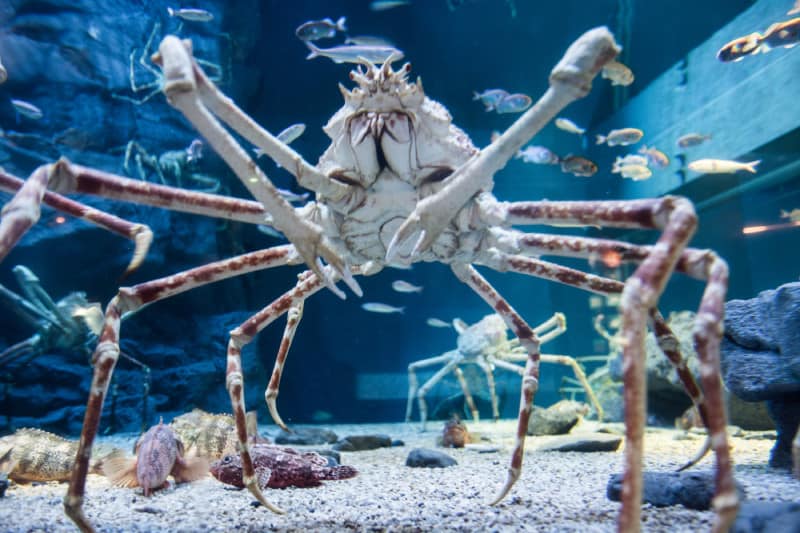



Japanese Spider Crab L Astounding Our Breathing Planet




Giant Spider Crabs Inside Ecology




Introspective World Japanese Spider Crab




Japanese Spider Crab Facts Anatomy Diet Behavior Habitat



Riverview Science George Sember Japanese Spider Crab




Aquarium Of The Pacific Exhibits Northern Pacific Gallery Exhibition Pacific Public Aquarium



1



Q Tbn And9gcqbfqzpukzxjcglzzurhnrgvdgms1an 72a4ttzaa3yiidv3zcc Usqp Cau



Japanese Spider Crab Project Noah



Japanese Giant Spider Crab Swimming Underwater Aquariumun On The Rock Stock Photo Crushpixel




The Giant Japanese Spider Crab Youtube
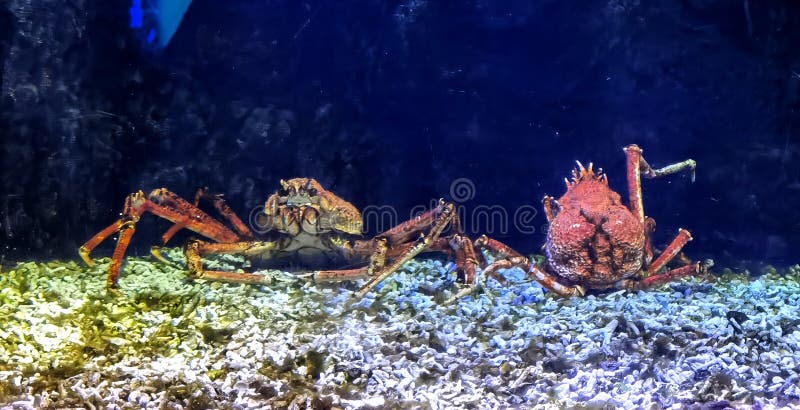



460 Japanese Spider Crab Photos Free Royalty Free Stock Photos From Dreamstime




Japanese Spider Crab Habitat Lesson For Kids Study Com




Japanese Spider Crab Wikipedia




Meet The Japanese Spider Crab The Daddy Long Legs Of The Sea
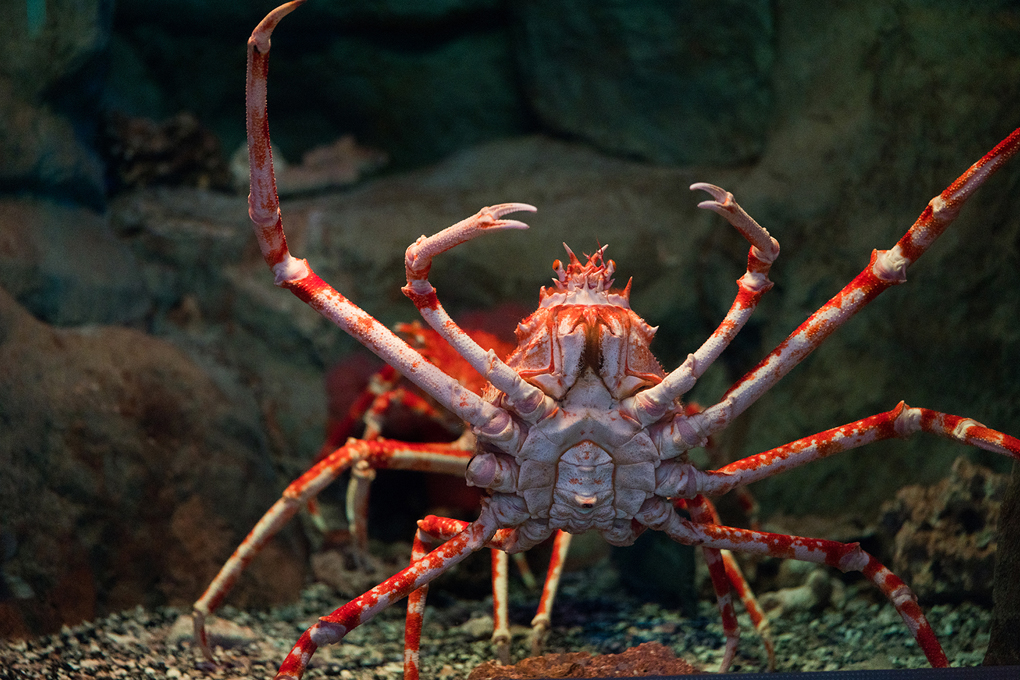



Japanese Spider Crab The Living Planet Aquarium




Macrocheira Kaempferi Japanese Giant Spider Crab




Japanese Spider Crab Oregon Coast Aquarium




Japanese Spider Crab Macrocheira Kaempferi Other




Japanese Spider Crab Macrocheira Kaempferi Jungledragon
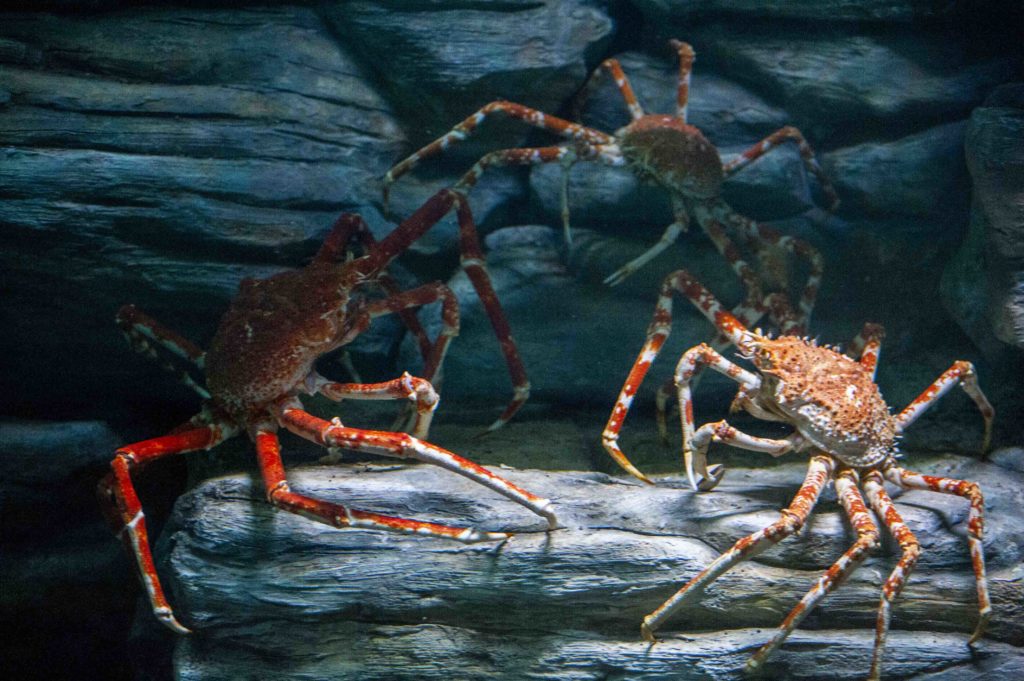



Spider Crabs Make A Scientific Splash Point Defiance Zoo Aquarium




Japanese Spider Crabs Pop Books Online




Arthropods Newport Aquarium




Amazing Nature 72 Japanese Spider Crab Steemit




Common Spider Crab Chesapeake Bay Program
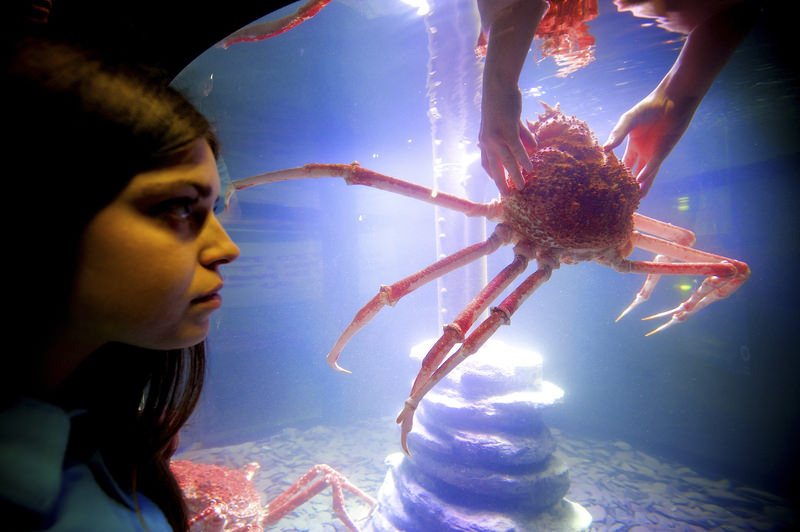



Giant Japanese Spider Crab At Istanbul Aquarium Daily Sabah
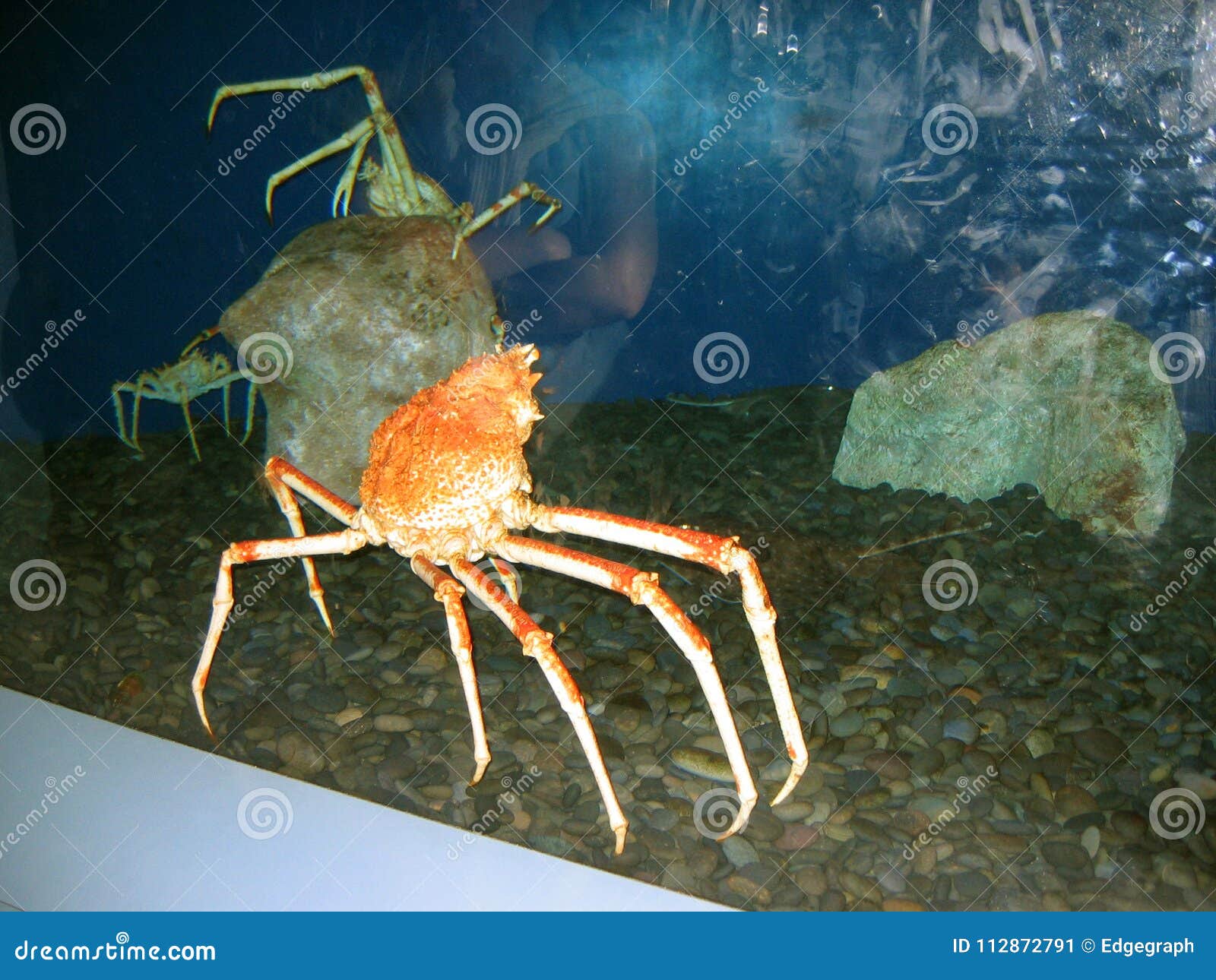



Japanese Spider Crabs Aquarium Of The Pacific Long Beach California Usa Stock Image Image Of Habitat Aquarium



Crab Japanese Spider Crab Information For Kids




Japanese Spider Crab Sea Life Munich
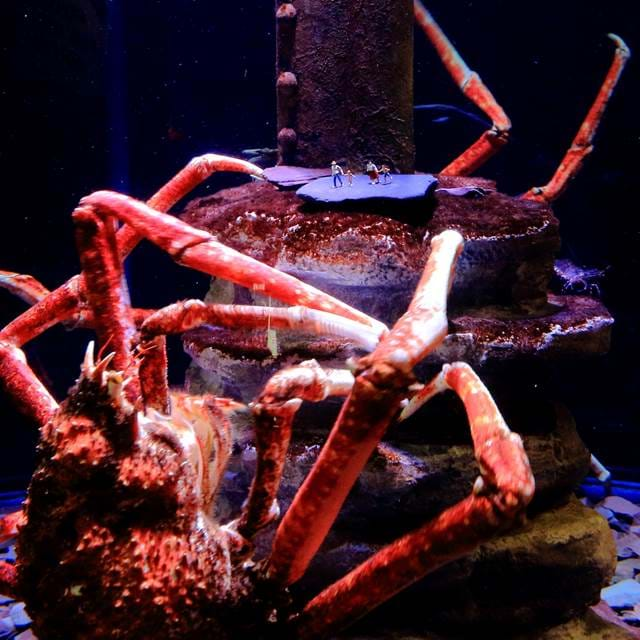



Giant Spider Crab Sea Life Bangkok Ocean World




Spider Crabs Make A Scientific Splash Point Defiance Zoo Aquarium




The Zoo Review Species Fact Profile Japanese Spider Crab Macrocheira Kaempferi




21 Creepy Facts About The Japanese Spider Crab Animal Stratosphere




Japanese Spider Crab Exequy S Blog
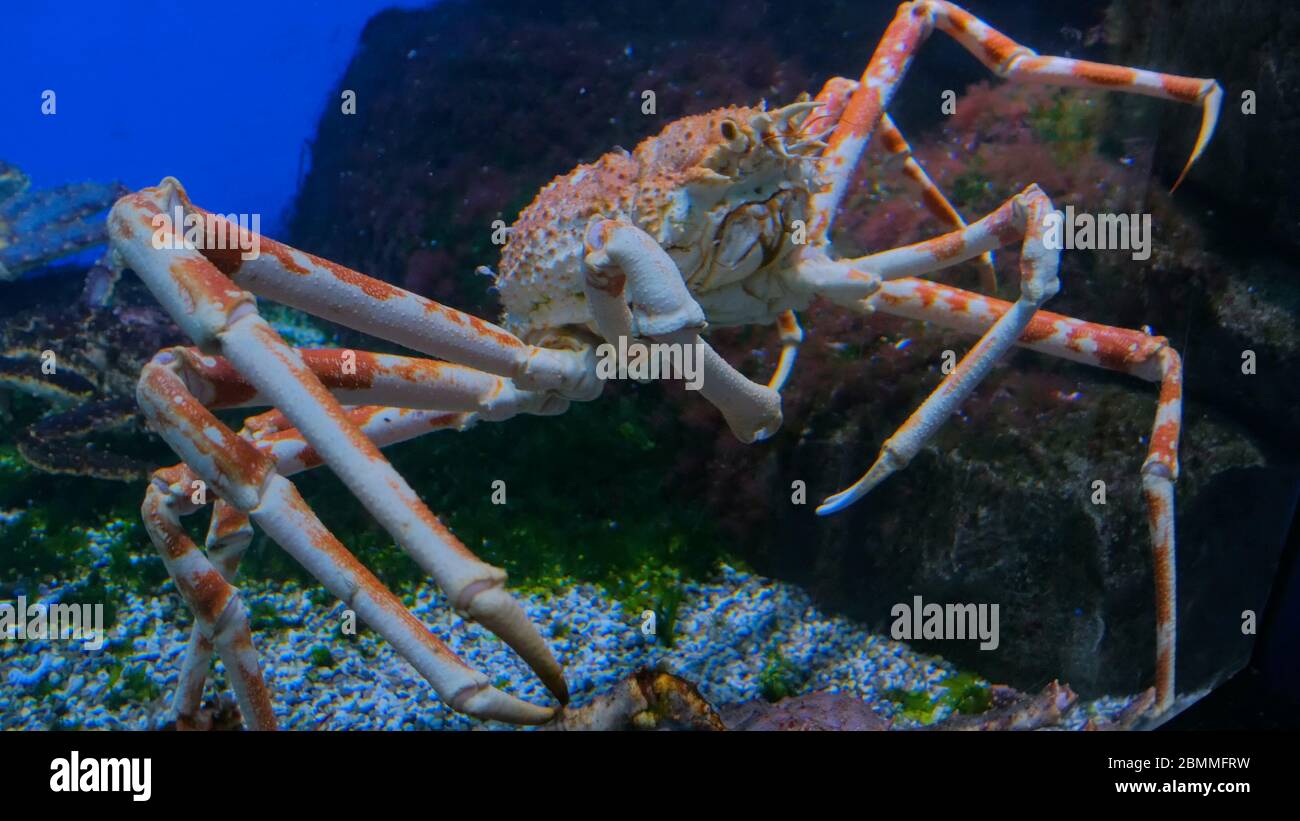



Japanese Spider Crab High Resolution Stock Photography And Images Alamy




Japanese Spider Crab The Gentle Giant Under The Sea Scarier Than Ursula
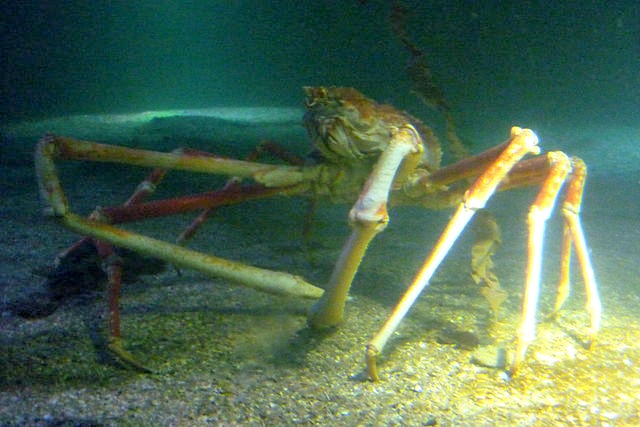



Giant Japanese Spider Crab Facts Always Learning




Japanese Spider Crab Smithsonian Ocean




Creature Feature Japanese Spider Crab
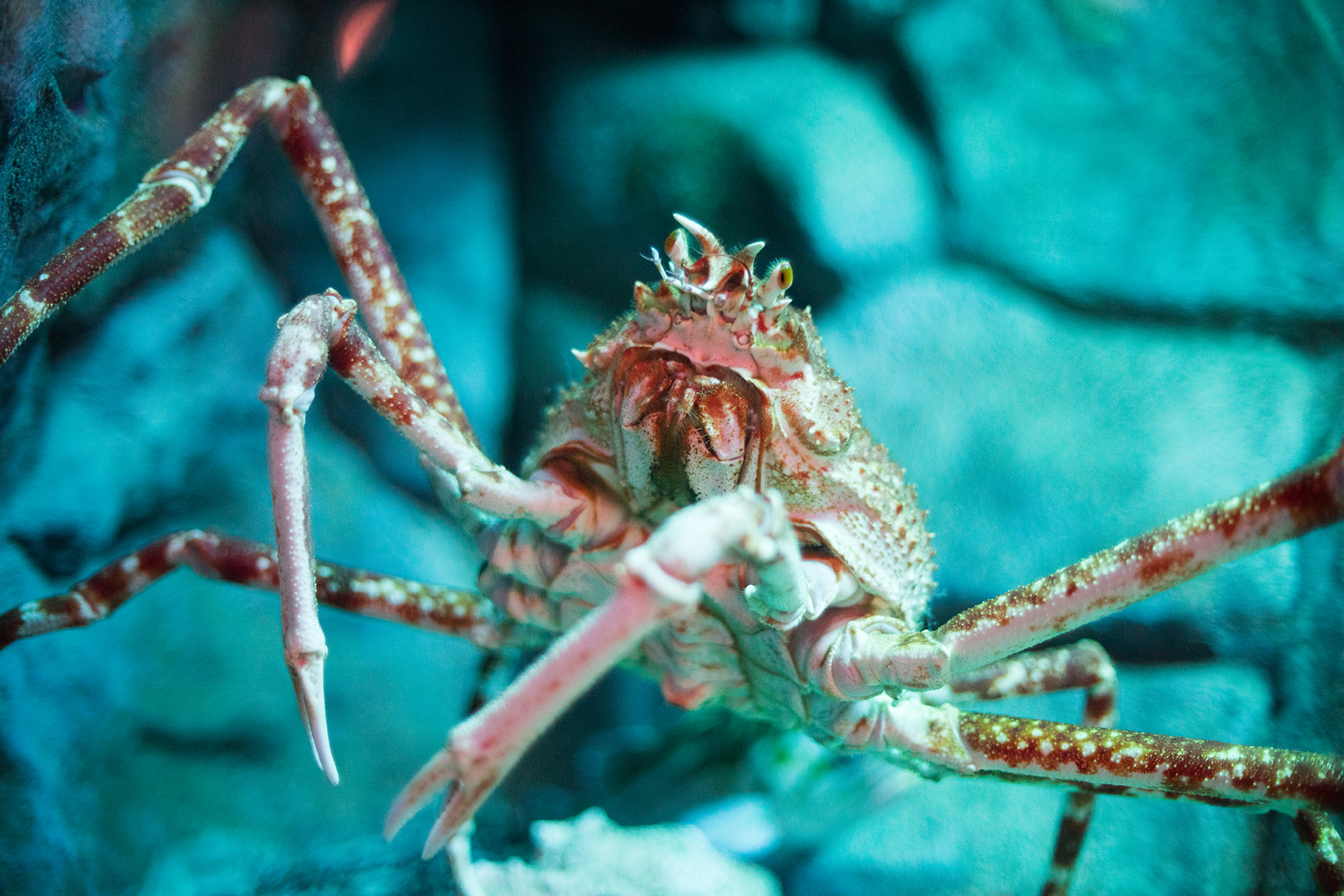



Japanese Spider Crab The Living Planet Aquarium



0 件のコメント:
コメントを投稿